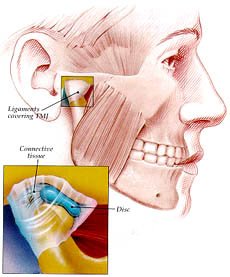 A self-described fan of bubblegum, Norma Pelt has paid a high price for her love of this kind of “the bubbly” over the years.
A self-described fan of bubblegum, Norma Pelt has paid a high price for her love of this kind of “the bubbly” over the years. Along with dizzy spells and a constant pain in her jaw, she said, repetitive chewing triggered powerful headaches, especially at night.
“It’s been very painful,” she said, describing her condition, which began 15 years ago, and was only recently diagnosed, during a flare-up, as a temporomandibular joint and muscle disorder.
The umbrella term refers to a group of conditions that cause varying degrees of pain and dysfunction in and around the temporomandibular jaw joint and the muscles that control their movement on each side of the head.
The National Institute of Dental and Craniofacial Research estimates about 10 million Americans have symptoms associated with these disorders, with 5 percent to 15 percent, like Pelt, experiencing the most common ones: pain and restricted jaw movement, often accompanied by a clicking or popping sound.
Women in their reproductive years are now considered nine times more likely to develop a TMJ disorder than men — a finding reshaping traditional assumptions about the causes lying behind these conditions, according to Dr. Christian Stohler, dean of the University of Maryland Dental School in Baltimore, Md.
“A lot has changed on the TMJ front in the last 15 years,” he says. “Today, we realize this is a highly complex disease involving many genes, hormones and a myriad of complex biologic factors.”
Although a number of existing treatments bring pain relief for most patients, Stohler says, they do not deal with the underlying disease process, a complex interplay of biologic factors that go beyond a misalignment of teeth or bite problems, once held solely responsible for these disorders.
They include genetic differences in pain perception or how an individual responds to pain, and the frequent presence of other painful conditions, such as fibromyalgia or rheumatoid arthritis, among others, which may mask or modify the symptoms of a TMJ problem.
“Most of these cases do resolve on their own, but some people suffer for years,” Stohler said. “And the more severe the case, the greater the likelihood that TMJ will coexist with other medical problems.”
In Pelt’s case, her jaw condition is moderate, according to her dentist, Dr. Michelle Dorsey, a solo practitioner on Merritt Island, Fla., who is centering treatment around a computer-guided sensing device, made by Tekscan. It replaces the old “tap, tap” articulation papers used to measure and assess a patient’s bite and how teeth touch, or occlude.
“It tells me which tooth is hitting which tooth and with what force over time,” says Dorsey — critical information to “occlusal equilibration,” the treatment’s ultimate goal, once the joints have been stabilized and the tissue inflammation quelled.
As part of her therapy, Pelt wears a customized splint at night.
The splint doesn’t just protect the teeth from being worn or cracked, Dorsey said, but it takes the pressure off the closing muscles in the mouth so they can relax and lengthen over time, allowing the joint to sit comfortably in the socket without pain.
“This is a process that takes time,” she says, with patients typically coming in for an hour once a week, possibly for many months. “It’s similar to physical therapy when you sprain your leg.”
As a dentist on the front lines, Dorsey said, she became interested in the jaw-pain disorders when she began developing her own problem, in which her teeth began to shift unexpectedly, leaving open areas of contact in her mouth.
Although she had no pain, she said, she had problems with food lodging in her teeth, which became “very annoying.”
So she decided to learn more about TMJ, studying “occlusion training” at the Dawson Academy in St. Petersburg, Fla., where she also underwent treatment, and a 25-month course at the University of Florida.
“I’ve seen about an 80 percent improvement in my own case, so far,” Dorsey says.
Pelt, too, said the subtle changes in her mouth during the past few months have begun to ease the pain, although she did not put a percentage on how much.
“I’m not waking up with headaches any more and the dizziness has gone away,” says Pelt, who works in a day care center in Rockledge. “Since coming here, I’ve been much better.”
-- Cure Your TMJ Now --





